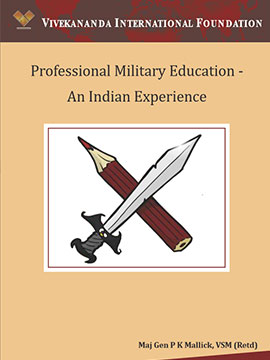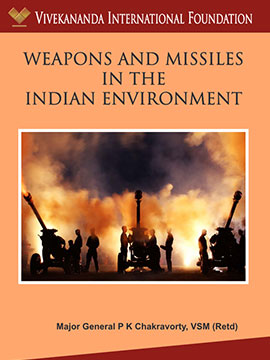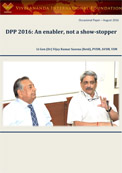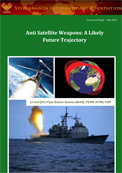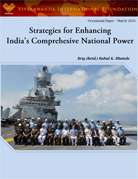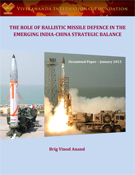Introduction “The society that separates its scholars from its warriors will have its thinking done by cowards and its fighting done by fools.” - Thucydides Professional Military Education (PME) has always been a critical component of developing military leaders. It is based on two key principles: train for certainty, so that military personnel gain and master the skills needed for known tasks and educate for uncertainty, so that they have the broad base of knowledge and critical thinking skills needed to handle unanticipated and unpredictable situations.
Firepower in the current era is characterised by multiple combat platforms– guns, howitzers, multi-rockets and missiles - managed through the means of surveillance, target acquisition, engagement, destruction, and finally, damage assessment. For such complex orchestration of firepower to bear fruition, it is necessary to imbibe the right combinations of tactical, technical, logistic and financial factors which have to be derived from fundamental professional acumen rooted at the origins of firepower, the courses of its development and finally, the contemporary parameters of its application.
DPP or no DPP the onus of success or failure lies in the hands of those who operate the DPP. Like they say, the law is only as good as the enforcer of the law. DPP 2016 or DPP 2056, it will be only as good as the persons who operate it, who interpret its content and apply the same to procurements at hand. Click here to read full paper
The concept of ASAT weapons has evolved over time as a logical progression from the mother concept of Anti Ballistic Missiles (ABM) or its more recent coinage,the Ballistic Missile defence (BMD)-- a Missile-based defence against the adversary's threat of Ballistic Missiles. Click here to read full paper
Comprehensive National Power – Concept and Utility National power is defined as the ability of a nation to attain its strategic objectives by directed action. The use of power would be based on the overall national vision based on the aspirations of the people at large and the capability of the leadership to fulfill the same. Click here to read full Paper
India and China have been pursuing essentially a two pronged strategy in Asia, particularly in the Indian Ocean region. On the one hand, they are engaged in a growing economic partnership with a moderating influence on the strategic competition. On the other hand, they have been relentless in their pursuit of a militarily advantageous position in the region. The equation, however, is not comparable, with India having to account for Pakistan, while China has to contend with a US-Taiwan partnership.
According to Stockholm International Peace Research Institute (SIPRI), today India is world’s largest arms importer with country’s spending on defence hovering between 2.3% and 3% of GDP.
350

